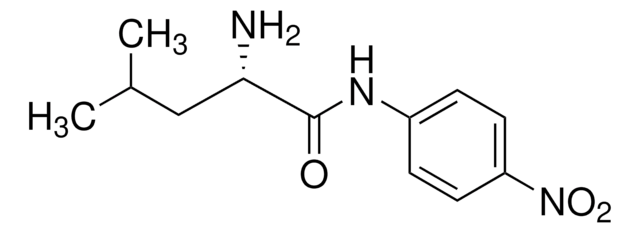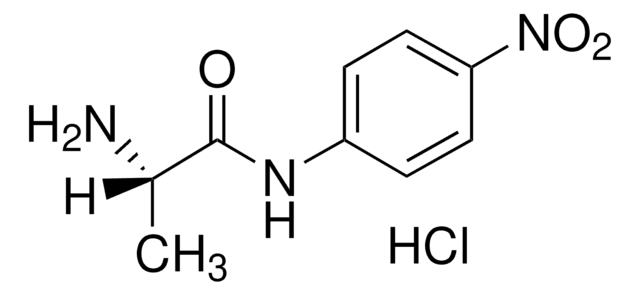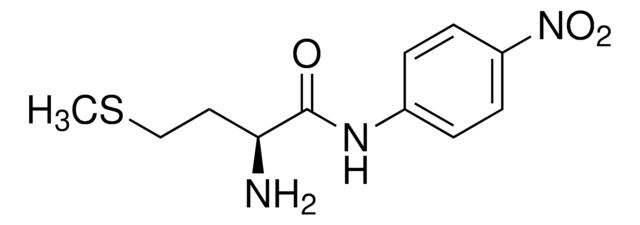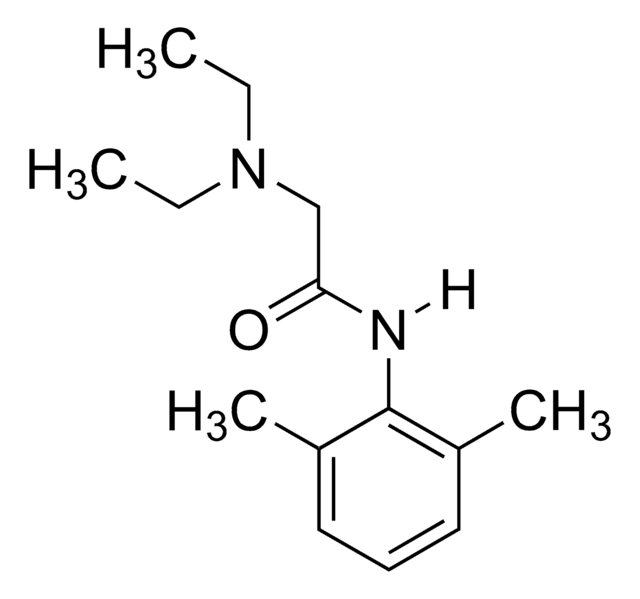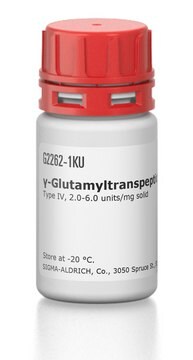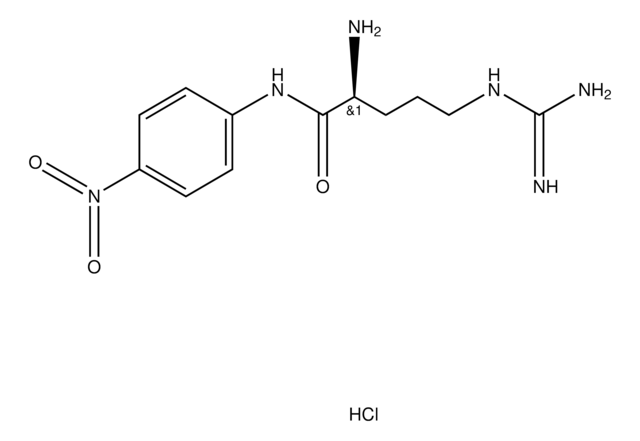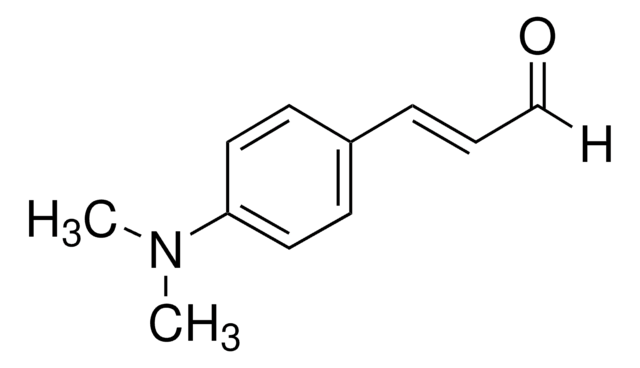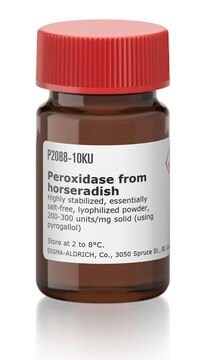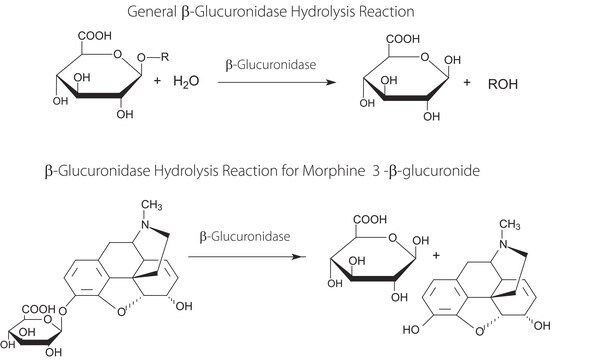Key Documents
P5267
L-Proline p-nitroanilide trifluoroacetate salt
≥99% (TLC), suitable for ligand binding assays
Synonim(y):
N-(4-Nitrophenyl)pyrrolidine-2-carboxamide, P-pNA, Pro-pNA
About This Item
Polecane produkty
product name
L-Proline p-nitroanilide trifluoroacetate salt, prolyl aminopeptidase substrate
Próba
≥99% (TLC)
Postać
powder
metody
ligand binding assay: suitable
kolor
white to yellow
temp. przechowywania
2-8°C
ciąg SMILES
OC(=O)C(F)(F)F.[O-][N+](=O)c1ccc(NC(=O)[C@@H]2CCCN2)cc1
InChI
1S/C11H13N3O3.C2HF3O2/c15-11(10-2-1-7-12-10)13-8-3-5-9(6-4-8)14(16)17;3-2(4,5)1(6)7/h3-6,10,12H,1-2,7H2,(H,13,15);(H,6,7)/t10-;/m0./s1
Klucz InChI
KYRVEVYREUUAKH-PPHPATTJSA-N
Powiązane kategorie
Opis ogólny
Zastosowanie
Kod klasy składowania
11 - Combustible Solids
Klasa zagrożenia wodnego (WGK)
WGK 3
Temperatura zapłonu (°F)
Not applicable
Temperatura zapłonu (°C)
Not applicable
Środki ochrony indywidualnej
Eyeshields, Gloves, type N95 (US)
Certyfikaty analizy (CoA)
Poszukaj Certyfikaty analizy (CoA), wpisując numer partii/serii produktów. Numery serii i partii można znaleźć na etykiecie produktu po słowach „seria” lub „partia”.
Masz już ten produkt?
Dokumenty związane z niedawno zakupionymi produktami zostały zamieszczone w Bibliotece dokumentów.
Klienci oglądali również te produkty
Nasz zespół naukowców ma doświadczenie we wszystkich obszarach badań, w tym w naukach przyrodniczych, materiałoznawstwie, syntezie chemicznej, chromatografii, analityce i wielu innych dziedzinach.
Skontaktuj się z zespołem ds. pomocy technicznej